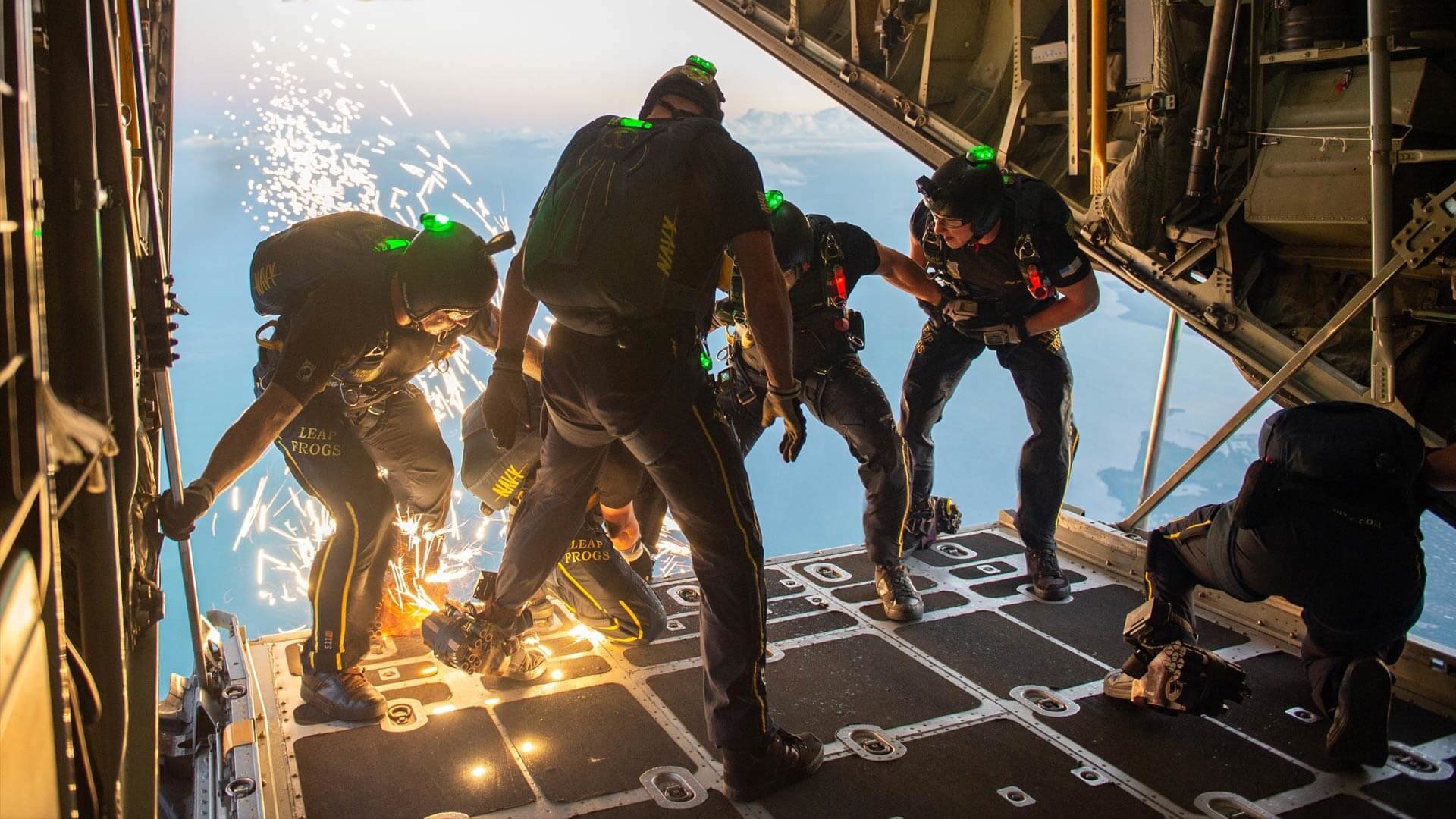The US Navy Parachute Team: From UDT ‘Chuting Stars’ to Navy SEAL ‘Leap Frogs’

US Navy Leap Frogs. Photo courtesy of navy leapfrogs.com
How did the Navy “Leap Frogs” parachute demonstration team come to be?
In 1956, a frogman from Underwater Demolition Team (UDT) 21 — one of the predecessor teams of the Navy SEALs — acquired a main and reserve parachute after answering an advertisement from Mechanics Illustrated. This frogman, named Jim McGee, and Lt. j.g. Bruce Welch, another UDT frogman, took to the air in a two-seated Aeronca Chief aircraft. The pair alternated between piloting and skydiving duties as they began experimenting with free-fall jumps. The word spread like wildfire among a community of adrenaline seekers from UDT 21 and UDT 22, and soon they formed the South Norfolk Parachute Club.
The sailors smartly affiliated with the Parachute Club of America, which later became the United States Parachute Association. In 1959, the US Army’s 18th Airborne Corps’ Strategic Army Corps Parachute Team — now better known as the “Golden Knights” — set the gold standard for parachute demonstrations. Through these relationships and under the Golden Knights’ guidance, the Navy had the tools to bring its own demonstration team into being.
The US Navy Parachute Exhibition Team, nicknamed the “Chuting Stars,” was established in 1961 for the celebration of the 50th anniversary of naval aviation. They participated in naval air shows throughout the early 1960s until budget cuts temporarily grounded the team. They didn’t gain official recognition as the Navy Parachute Team until 1969.
Eventually, the Navy Parachute Team on the West Coast adopted the name “Leap Frogs,” while the jump team on the East Coast continued the “Chuting Stars” tradition. When the Chuting Stars were disbanded for good in the mid-1980s, the Leap Frogs took over the role for all Navy demonstrations across the United States. Today, the Leap Frogs consist of active-duty Navy SEALs, Special Warfare Combatant-Craft Crewmen (SWCCs), and support personnel.
Their signature yellow parachutes display the words “NAVY,” “SEAL,” or “SWCC” as they float above the spectators in football stadiums and baseball parks.
“Jumping into the Cubs stadium is always an honor, and it’s a huge privilege,” said retired US Navy SEAL Jim Woods of the Chicago’s Wrigley Field. “[It’s] kind of the American tradition to jump into one of the oldest baseball fields in the United States. It was a lot of fun in and on it.”
Whether it is a night jump or day jump, the Leap Frogs certainly entertain. “Before every demonstration we first do a ‘streamer pass’ to help us gauge wind speed and direction,” according to the Leap Frogs official website. Once they leave the plane to perform, they create intricate formations, use canisters attached to one foot to release colorful smoke, and sometimes they even hang an American flag or a Navy SEAL trident emblem flag below them.
When the Leap Frogs land, they greet smiling and curious spectators of all ages. The Leap Frogs serve to spread the word about Naval Special Warfare to communities all over the United States.

Matt Fratus is a history staff writer for Coffee or Die. He prides himself on uncovering the most fascinating tales of history by sharing them through any means of engaging storytelling. He writes for his micro-blog @LateNightHistory on Instagram, where he shares the story behind the image. He is also the host of the Late Night History podcast. When not writing about history, Matt enjoys volunteering for One More Wave and rooting for Boston sports teams.
BRCC and Bad Moon Print Press team up for an exclusive, limited-edition T-shirt design!
BRCC partners with Team Room Design for an exclusive T-shirt release!
Thirty Seconds Out has partnered with BRCC for an exclusive shirt design invoking the God of Winter.
Lucas O'Hara of Grizzly Forge has teamed up with BRCC for a badass, exclusive Shirt Club T-shirt design featuring his most popular knife and tiomahawk.
Coffee or Die sits down with one of the graphic designers behind Black Rifle Coffee's signature look and vibe.
Biden will award the Medal of Honor to a Vietnam War Army helicopter pilot who risked his life to save a reconnaissance team from almost certain death.
Ever wonder how much Jack Mandaville would f*ck sh*t up if he went back in time? The American Revolution didn't even see him coming.
A nearly 200-year-old West Point time capsule that at first appeared to yield little more than dust contains hidden treasure, the US Military Academy said.












